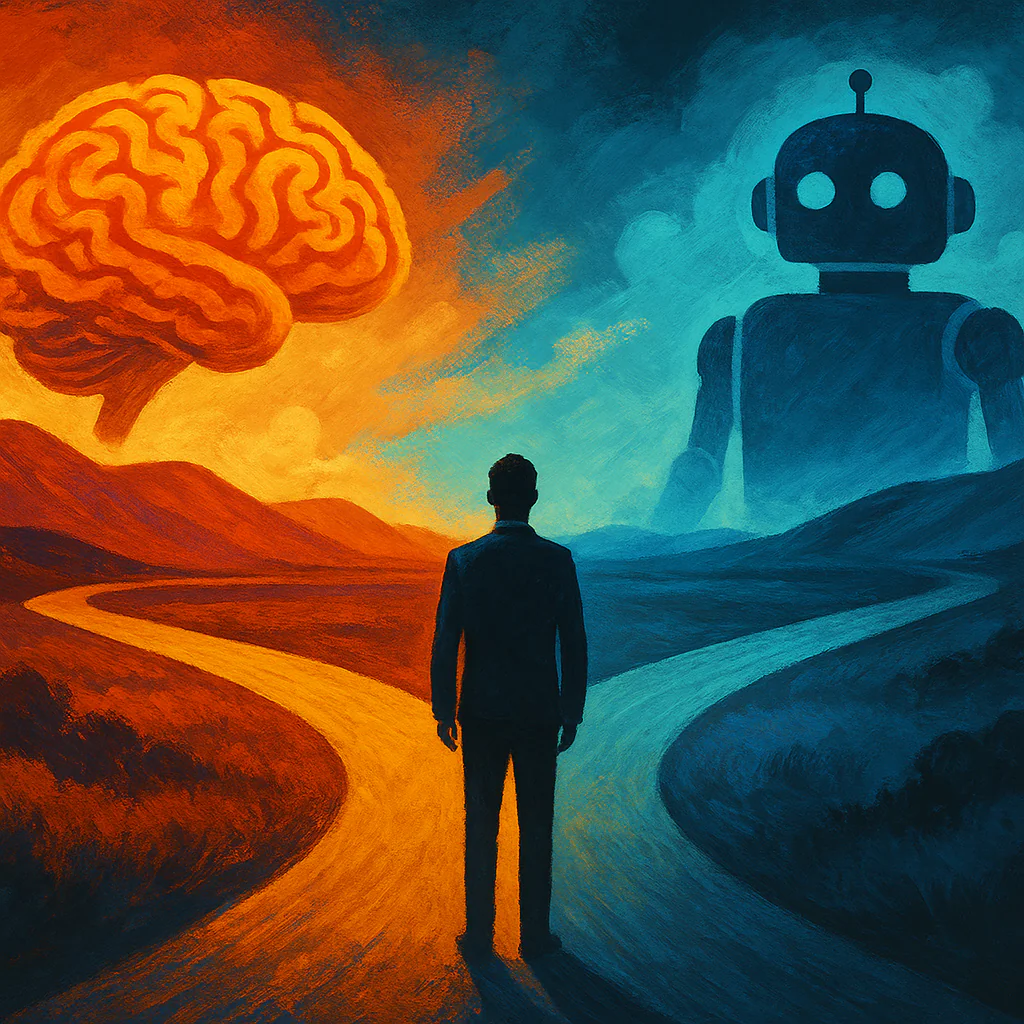💡Quick glance: What you’ll learn in this blog
- The real difference between Custom GPTs and Agents — in plain English
- Where each fits: content vs workflow, coaching vs action
- What it takes to build, train, and improve them
- Real examples of how businesses use both (and why)
- Cost and ROI breakdowns to help you get buy-in
- When to use one, the other… or both
The moment this decision shows up
It starts like this:
Your sales team is rewriting the same email for the 40th time. Your customer support team is answering a question your knowledge base already solved — again. Then, your marketing team is staring at a blank page, trying to remember how you “usually say it.”
So someone finally asks:
| “Can’t AI just handle this?”
You nod. You’ve seen what ChatGPT can do. Then the next question hits:
“Should we build a GPT… or something more custom?”
That’s the fork in the road. Two powerful paths. Very different builds.
In this post, we’ll walk through what a Custom GPT really is, how it compares to an Agent, and which one makes sense for your business — with plain-English answers and examples from real teams.
The fork in the road: One goal, two build paths
You want an AI assistant to:
- Answer internal or customer questions
- Write better content, faster
- Take action or pull data
- Save time and reduce rework
You’ve got two real ways to build it in OpenAI’s ecosystem:
| Custom GPT (No-Code) | Agent (Programmable) | |
|---|---|---|
| Built inside | ChatGPT (UI wizard) | OpenAI API platform (backend code) |
| Coding required | ❌ None | ✅ Yes (functions, tools, logic) |
| Memory | Optional (per user) | Configurable (shared or private) |
| Actions/tools | Limited to OpenAI tools | Custom APIs, databases, multi-step flows |
| Cost to build | Low (time only) | Higher (dev time + testing) |
| Best for | Style coaching, answers, and content | Process automation, decision-making bots |
| Doceo Pro Tip: A Custom GPT is like a smart intern who knows your playbooks. An Agent is more like a junior teammate — able to follow steps, make decisions, and trigger actions based on logic.
What is a Custom GPT — and where does it shine?
A Custom GPT is a no-code, branded assistant you build right inside ChatGPT.
You write:
- A prompt (example: “You are an HR assistant who answers with empathy.”)
- Upload reference files (PDFs, guides, policies)
- Choose whether it can browse the web, generate images, or write code
Then you hit publish. That’s it.
It lives inside ChatGPT and anyone with a link (and ChatGPT Pro) can use it. It doesn’t require coding or special tools.
Great for:
- Training new hires with approved answers
- Helping marketers stay in brand voice
- Speeding up email and content drafts
- Turning policy PDFs into usable guidance
| Scenario: A 35-person firm in the Mid-Atlantic region created a Custom GPT that helps internal teams rewrite complex updates in plain English — using uploaded templates. It launched in 3 hours, saved ~10 hours/week immediately, and required zero dev work.
What is an Agent — and when does it make sense?
Agents are for when your assistant needs to think, decide, and do.
They’re built in the OpenAI API platform. Developers can define:
- Custom tools (functions or API endpoints)
- Memory and instructions (what to remember, when to act)
- Rules and logic (if-this-then-that workflows)
This unlocks serious horsepower:
- Multi-step automation
- Pulling data from CRMs or databases
- Responding to triggers (like incoming emails or webhooks)
- Building secure, branded AI assistants for internal tools
| Scenario: A financial services team built an Agent that summarizes CRM notes, checks for flagged terms, and creates follow-up tasks. It used API calls, internal scoring logic, and built-in memory. It took ~3 weeks to build — and replaced 3 manual tasks.
What’s the real difference in how they work?
Let’s compare what happens under the hood:
| Custom GPT | Agent | |
|---|---|---|
| User experience | Runs in ChatGPT, easy to share | Hosted via API, can live in your app or tool |
| How it answers | Based on prompt + uploaded files | Based on logic, memory, and real-time data |
| What it can do | Generate text, answer questions, follow tone | Take action, chain steps, store or retrieve data |
| How it learns | You update the instructions or files | You revise logic, tools, and code |
| Doceo Pro Tip: GPTs are great when the bottleneck is writing or explaining. Agents shine when the bottleneck is clicking, copying, or coordinating tools.
How do they improve over time?
Neither learns on its own. You train them by improving how they’re built.
| Custom GPT | Agent | |
|---|---|---|
| Version control | Manual updates in builder | Codebase with versions and logs |
| Knowledge updates | Replace PDFs, edit system prompt | Update memory, logic, or API outputs |
| Memory | Only within a user’s session (optional) | Persistent and shared if configured |
| Governance level | Low (safe for most teams) | Higher (test needed before deployment) |
Use case guide: real-world examples
| Goal | GPT or Agent? | Why? |
|---|---|---|
| Help new hires find quick answers to HR policies | Custom GPT | Upload docs + tone = fast, friendly onboarding bot |
| Rewrite sales emails in brand tone | Custom GPT | Train on templates and guides — instant assistant |
| Summarize helpdesk tickets for exec reports | Agent | Needs structured outputs and chaining |
| Auto-update CRM from incoming forms | Agent | Needs API access and logic |
| Answer client questions with live data | Agent | Must connect to secure internal systems |
| Explain benefit options during open enrollment | Custom GPT | Controlled source, repeatable messaging |
What does it cost?
| Custom GPT | Agent | |
|---|---|---|
| Build time | 1–3 hours | 1–4 weeks |
| Who builds it | Anyone (no-code) | Developers, with business input |
| Run cost | Free to build; user needs ChatGPT Pro | You pay API usage + dev time |
| Maintenance | Low (update files/prompts) | Medium to high (logic, testing, governance) |
| Mini-scenario: A marketing team saved ~$18K/year by rolling out a GPT that rewrote LinkedIn posts using their tone and approved brand voice. No tools. No APIs. Just well-structured guidance — delivered at scale.
What if you do nothing?
Let’s say:
- 20 team members lose ~15 minutes/day rewriting or searching
- That’s 75 hours/month
- At $45/hour loaded cost, that’s $3,375/month in wasted time
If a Custom GPT cuts that in half — that’s $20K/year back in your budget.
For one use case.
And that’s before you layer in Agents.
Still unsure which one’s right? That’s where Doceo can help.
Our Chief Marketing Officer, Jim Haney, is MIT-certified in Generative AI and Digital Transformation — and leads a full range of consulting, project delivery, and team trainings under Doceo’s Marketing Services.
Whether you’re starting with your first GPT or building an enterprise-grade Agent system, Jim helps you:
- Scope the right path
- Avoid wasted effort
- Align tools with real business value
✅ Let’s move from curiosity to clarity
👤 Connect with Jim on LinkedIn
📅 Request a consultation with Jim — just note you’re exploring AI and want to talk next steps


